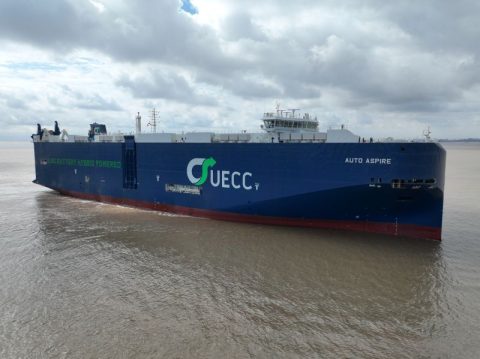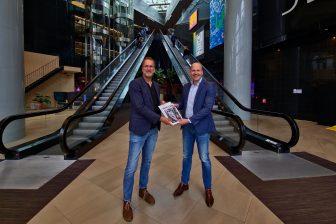
UECC receives third and final vessel in series of newbuild PCTC
United European Car Carrier’s (UECC)’s Auto Aspire is the last in a series of three newbuild multi-fuel LNG battery hybrid pure car and truck carriers (PCTC)’s.
The Auto Aspire, with a length of 169 metres, and a beam of 28 metres, has a gross tonnage of 35,667 tonnes and can carry 3600 vehicles on 10 cargo decks. The vessel was delivered from China’s Jiangnan Shipyard on 20 October and will join its two sisters PCTCs, the Auto Advance and Auto Achieve, on Northern European ro-ro trade routes.
The ordering of this series was instigated by UECC’s desire to meet the requirements for low-emission shipping. “Imminent regulatory changes are shifting the market landscape in favour of green-focused players and these new builds represent timely and sizable investments that offer our clients a sustainable shipping solution with both environmental and cost benefits,” says UECC’s CEO Glenn Edvardsen.
Low carbon, low emission
The Auto trio is designed first to run on liquefied natural gas (LNG) but will be able to use drop-in fuels such as bio-LNG and synthetic LNG as these become more available. Hybrid batteries enable more emissions reductions through peak shaving and the use of battery power in ports, and energy efficiency is further enhanced by a smart energy management system, an optimised hull design and a controllable pitch propeller.
Costs from using conventional marine fuels will rise with the Energy Tax Directive that will impose a tax on hydrocarbon fuels in the European Economic Area from 2023 on, and the EU’s Emissions Trading System (ETS) to shipping, set to take effect in 2024. 80% of UECC’s current lifting capacity now meets the IMO 2030 requirements.
UECC will be on course to achieve the proposed FuelEU Maritime target for 2030 of a 6% annual reduction in carbon intensity once the Auto Aspire is brought into operation. All three newbuilds are also in compliance with the IMO’s Energy Efficiency Design Index (EEDI) that comes into force next year.
You just read one of our premium articles free of charge
Register now to keep reading premium articles.




